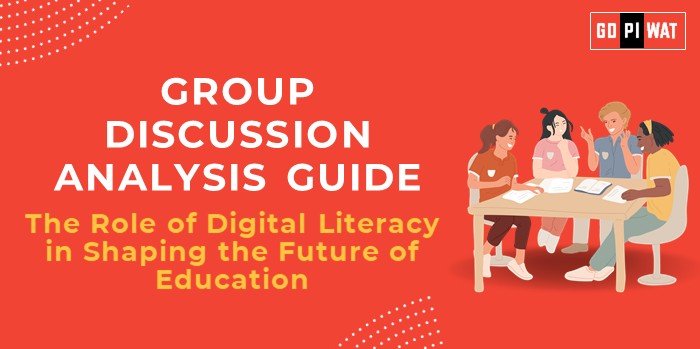🌐 The Role of Digital Literacy in Shaping the Future of Education
🌟 Introduction to the Role of Digital Literacy in Education
“In an era defined by rapid technological advancements, digital literacy is emerging as a cornerstone of modern education systems worldwide, bridging gaps in access and enabling innovative teaching methodologies.”
Digital literacy transcends basic computer skills, encompassing the ability to critically evaluate digital information, use digital tools effectively, and navigate the online world responsibly. The pandemic accelerated the shift to digital platforms, making digital literacy indispensable for the future of education.
📊 Quick Facts and Key Statistics
📡 India’s Internet Users: 900 million+ (2024), but only 20% rural households have stable internet access.
📚 PMGDISHA Digital Literacy: Over 6.7 crore citizens trained, aiming to reduce the digital divide.
📝 UNESCO Report: Over 1.6 billion students impacted by school closures during the pandemic, underscoring the need for digital education.
👥 Stakeholders and Their Roles
- 🏛️ Government: Policies like PMGDISHA and NEP 2020 focus on integrating digital literacy in curriculums.
- 🏫 Educational Institutions: Adopting hybrid learning models and digital tools.
- 📱 EdTech Companies: Providing platforms like BYJU’S and Coursera to scale personalized learning.
- 🎓 Students & Parents: Active participation and adapting to digital transformations.
🎯 Achievements and Challenges
✨ Achievements:
- 📘 Increased Accessibility: Digital platforms like Diksha and SWAYAM offering free learning materials.
- 💻 Skill Development: NEP 2020 mandates technology integration in education.
- 📈 Hybrid Learning Models: Boost in adoption post-COVID-19.
⚠️ Challenges:
- 📶 Digital Divide: Only 20% rural internet penetration.
- 📡 Infrastructure: Poor connectivity in remote areas.
- 🔒 Cybersecurity: Rise in online threats targeting educational platforms.
🌍 Global Comparisons:
🇪🇪 Estonia: Universal internet access enabling seamless e-education.
🇫🇮 Finland: High digital literacy levels integrated into national education systems.
🗣️ Structured Arguments for Discussion
- ✔️ Supporting Stance: “Digital literacy empowers students with critical skills needed for a tech-driven world, reducing unemployment and enhancing global competitiveness.”
- ❌ Opposing Stance: “Without equitable infrastructure and targeted policies, digital literacy efforts risk deepening the divide between urban and rural learners.”
- ⚖️ Balanced Perspective: “While digital literacy has transformative potential, its success depends on addressing challenges like infrastructure gaps and inclusivity.”
💡 Effective Discussion Approaches
🚀 Opening Approaches:
- 📊 Use a Stark Contrast: “India has 900 million internet users, yet only 20% of rural homes access stable connections.”
- 📖 Case Study: Highlight Kerala’s 93% digital literacy rate.
🛡️ Counter-Argument Handling:
- 🤝 Acknowledge barriers and suggest inclusive solutions like affordable data packages or public-private partnerships.
🔍 Strategic Analysis of Strengths and Weaknesses
- ✔️ Strengths: Growing EdTech industry, NEP 2020’s focus on technology.
- ❌ Weaknesses: Lack of skilled teachers for digital education, infrastructure gaps.
- 🌟 Opportunities: AI/ML tools for personalized learning.
- ⚡ Threats: Data breaches and privacy concerns in online education.
🎓 Connecting with B-School Applications
📈 Real-World Applications: Impact of digital literacy on operational efficiency in educational ventures.
🤔 Sample Interview Questions:
- What role does digital literacy play in achieving SDG 4 (Quality Education)?
- How can NEP 2020 be leveraged for improving digital learning outcomes?
✨ Insights for Students:
- Explore case studies in rural digital inclusion or EdTech entrepreneurship.


